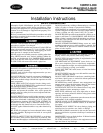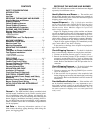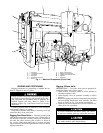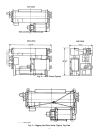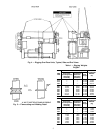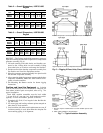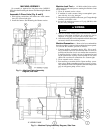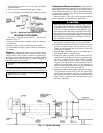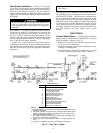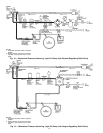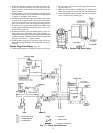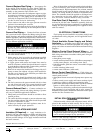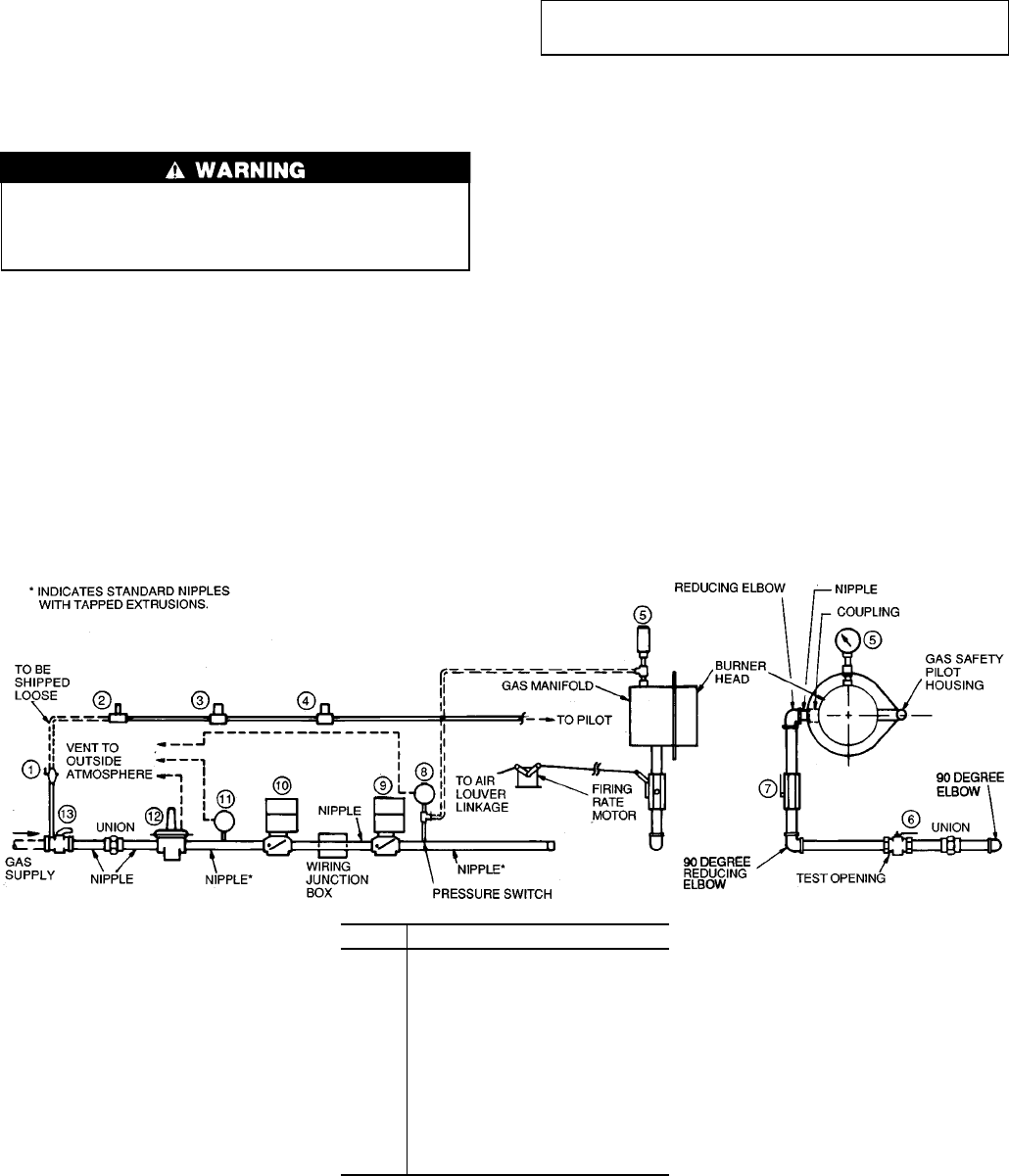
Fuel System Installation — See Fig. 12-14 for typi-
cal gas train and oil supply system arrangements. Refer to
burner manual supplied with the burner for installation in-
structions on the particular version of gas train and/or oil
supply system used with your application. These systems are
supplied pre-assembled, and with pre-installed interconnec-
tion fittings.
Do not use Teflon tape on any threaded connections as
a gas or oil pipe sealant. Loose tape pieces can cause
valve leakage and are a safety hazard. Use a pipe joint
compound.
GAS TRAIN — The high-gas pressure switch is mounted
on the gas train piping for convenience only, and does not
monitor the gas pressure at that location. A brass pipe tee
and a coil of 3/8-in. aluminum tubing with fittings are sup-
plied to connect the sensing line between the pressure switch
and the top of the burner manifold, as shown with dashed
lines on the gas train piping schematic.
Another coil of 3/8-in. aluminum tubing with compres-
sion fittings is provided for the pilot connection between the
pilot shutoff valve (mounted ahead of the main manual shut-
off valve) and the pilot gas pressure regulator (mounted on
the burner).
IMPORTANT: Do not use copper tubing for the gas
pilot supply.
Gas supply and vent connections are discussed under Con-
nect Fuel Piping in the Field Piping section of this manual.
OIL SUPPLY SYSTEM — This burner uses a separate motor-
driven oil pump which should be located close to the burner
and secured to the floor. The oil pump connections are iden-
tified with tags for suction (supply) and return lines. The pip-
ing diagram with mounting dimensions and port sizes for
your particular application is shown in the burner manual.
Oil supply and return connections are discussed under Con-
nect Fuel Piping in the Field Piping section of this
manual.
FIELD PIPING
Connect Water Piping —
Install piping using job data,
piping drawings, and procedures outlined below. A typical
piping installation is shown in Fig. 15.
1. Make sure all connections to water box covers allow open-
ing of covers for maintenance.
2. Installation and piping should allow sufficient access for
cleaning or replacing tubes.
3. Install pipe hangers where needed. Make sure no weight
or stress is placed on water box nozzles or flanges.
ITEM DESCRIPTION
1 Pilot Shutoff Cock
2 Pilot Gas Pressure Regulator
3 Second Safety Shutoff
Pilot Valve (if used)
4 Safety Shutoff Pilot Valve
5 Gas Pressure Gage (if used)
6 Manual Leak Test Valve
7 Butterfly Gas Valve
8 High Gas Pressure Switch
9 Safety Shutoff Gas Valve
10 Second Safety Shutoff Gas Valve
11 Low Gas Pressure Switch
12 Gas Pressure Regulator
13 Manual Gas Shutoff Valve
NOTES:
1. Pipingand fittings shown dashed to be supplied and installed by the burner
installation contractor.
2. For proper regulation and performance, regulators with internal control
require at least 5 pipe diameters of straight pipe on the outlet side un-
interrupted with fittings, elbows, etc.
3. The outlet screwed connections must conform with good piping prac-
tices, free of excess thread engagement.
4. The top cap at the spring must be in place or unstable operation can
occur.
5. For parts not identified, see burner manufacturer’s material list.
Fig. 12 — Gas Train, Typical
9



